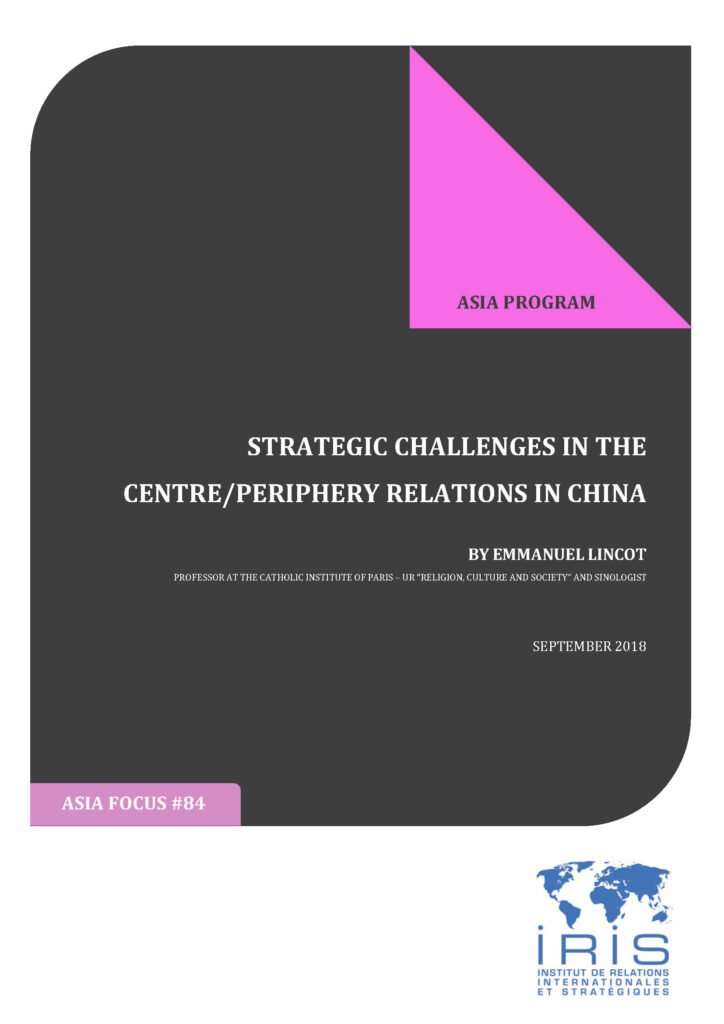Notes / Asia Focus
20 September 2018
Strategic Challenges in the Centre/Periphery Relations in China

Center, periphery … those are concepts saturated with meaning … The alliance between the technology and the speed, or what constitutes, according to Paul Virilio’s, a “dromosphere”, has considerably reduced the distances separating one point from another in the world. On the scale of China, three days were needed to link Beijing and the Kazakhstan border in the last century. Nowadays, it has become a matter of hours. But far from bringing people together, this sudden acceleration of the exchanges has provoked – in China and elsewhere – tensions, and even rift phenomena, as well as identity and religious claims. In sum, the link can be, at the same time, source of accession or source of reject. To that extent, the new silk roads are much more than mere terrestrial or maritime communication channels, only intended to the commerce of material goods. They have been for a very long time, and are still, “faith” roads. A purely realistic lecture of the international relationships might suggest that this phenomenon is very marginal. It is true that faith designates, in a multi-secular context, the innumerable exchanges that occurred, between Buddhist missionaries, in particular, or between merchants. Yet, one should not forget that the word “fides” means first and foremost, by its Latin etymology, the “trust”. It is at the origin of any credo, whether it is religious, political, or even both…

